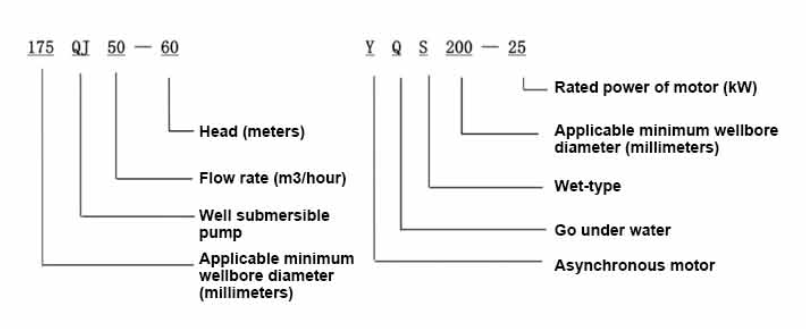Dec . 05, 2024 06:32 Back to list
12/2 Wire for Submersible Pump Applications and Installation Guide
Understanding the Submersible Pump Wire 12/2 An Essential Component for Efficient Water Management
In the realm of water management systems, submersible pumps play a crucial role, especially in applications such as well water pumping, wastewater treatment, and irrigation. Among the various components that ensure the efficient operation of these pumps, the electrical wiring used is of paramount importance. One such commonly used specification is the 12/2 wire for submersible pumps. This article explores what 12/2 wire is, its features, benefits, and considerations for installation, ensuring that users can make informed decisions when setting up their water management systems.
What is 12/2 Wire?
The designation 12/2 refers to the wire gauge and the number of conductors present in the cable. In this case, 12 indicates the thickness of the wire, measured in American Wire Gauge (AWG), while 2 signifies that there are two insulated copper conductors within the cable. Each of these conductors is typically capable of handling a specific amount of electrical current, making the 12/2 wire suitable for powering submersible pumps that require moderate to substantial power.
Features of 12/2 Wire
1. Wire Gauge and Current Capacity The 12 AWG wire is heavier than smaller gauges like 14 or 16. It can carry a current of up to 20 amps safely, making it ideal for many standard submersible pumps which often operate within this amperage range.
2. Durability The insulation around the wires is designed to withstand harsh conditions. Many submersible pump wires are coated with materials such as PVC or TPE, offering resistance against water exposure, abrasion, and various environmental factors.
3. Conductor Count The “2” in 12/2 means there are two conductors, which allows for a complete electrical circuit. This is vital for the functioning of any electrical device, requiring a pathway for current to flow to and from the pump.
Benefits of Using 12/2 Wire for Submersible Pumps
1. Safety The thicker gauge wire minimizes the risk of overheating and electrical fires, providing a safer option for connecting submersible pumps, especially in wet environments.
submersible pump wire 12/2

2. Efficiency Using the appropriately sized wire ensures that the pump operates efficiently, reducing energy losses that can occur with undersized wires. This efficiency not only conserves energy but can also extend the lifespan of the pump itself.
3. Simplicity in Installation The familiar standardized gauge makes 12/2 wiring straightforward to install and troubleshoot, allowing both professional contractors and DIY enthusiasts to work with ease.
Considerations for Installation
When installing submersible pumps, using the right wire gauge is crucial. While 12/2 wire is suitable for many applications, there are several factors to consider
1. Length of Run The distance between the power source and the pump matters. Longer distances may require a thicker wire to compensate for voltage drop, which can affect pump performance. For runs exceeding 100 feet, consider stepping up to a 10 AWG wire.
2. Environmental Conditions Evaluate the environment in which the wire will be placed. If the wire will be submerged in water for extended periods, ensure that you choose a wire rated specifically for submersible applications to avoid insulation degradation.
3. Electrical Requirements Consult the pump manufacturer's specifications to determine the exact electrical needs, ensuring that the wire selected is adequate to handle the specific load without risk of overheating.
4. Local Codes and Regulations Always check local building codes before installation, as these can dictate specific requirements for electrical wiring in submersible pump applications to ensure safety and compliance.
Conclusion
Understanding the role of 12/2 wire in submersible pump applications is essential for anyone involved in water management systems. Its capacity, safety features, and practical benefits make it a preferred choice for many users. By considering installation factors, users can ensure optimal performance and longevity of their submersible pumps, thereby enhancing the efficiency of their water management systems. With the right wiring in place, users can confidently rely on their pumps to perform effectively, no matter the demand.
-
Submersible Water Pump: The Efficient 'Power Pioneer' of the Underwater World
NewsJul.01,2025
-
Submersible Pond Pump: The Hidden Guardian of Water Landscape Ecology
NewsJul.01,2025
-
Stainless Well Pump: A Reliable and Durable Pumping Main Force
NewsJul.01,2025
-
Stainless Steel Submersible Pump: An Efficient and Versatile Tool for Underwater Operations
NewsJul.01,2025
-
Deep Well Submersible Pump: An Efficient 'Sucker' of Groundwater Sources
NewsJul.01,2025
-
Deep Water Well Pump: An Efficient 'Sucker' of Groundwater Sources
NewsJul.01,2025
-
 Submersible Water Pump: The Efficient 'Power Pioneer' of the Underwater WorldIn the field of hydraulic equipment, the Submersible Water Pump has become the core equipment for underwater operations and water resource transportation due to its unique design and excellent performance.Detail
Submersible Water Pump: The Efficient 'Power Pioneer' of the Underwater WorldIn the field of hydraulic equipment, the Submersible Water Pump has become the core equipment for underwater operations and water resource transportation due to its unique design and excellent performance.Detail -
 Submersible Pond Pump: The Hidden Guardian of Water Landscape EcologyIn courtyard landscapes, ecological ponds, and even small-scale water conservancy projects, there is a silent yet indispensable equipment - the Submersible Pond Pump.Detail
Submersible Pond Pump: The Hidden Guardian of Water Landscape EcologyIn courtyard landscapes, ecological ponds, and even small-scale water conservancy projects, there is a silent yet indispensable equipment - the Submersible Pond Pump.Detail -
 Stainless Well Pump: A Reliable and Durable Pumping Main ForceIn the field of water resource transportation, Stainless Well Pump has become the core equipment for various pumping scenarios with its excellent performance and reliable quality.Detail
Stainless Well Pump: A Reliable and Durable Pumping Main ForceIn the field of water resource transportation, Stainless Well Pump has become the core equipment for various pumping scenarios with its excellent performance and reliable quality.Detail
